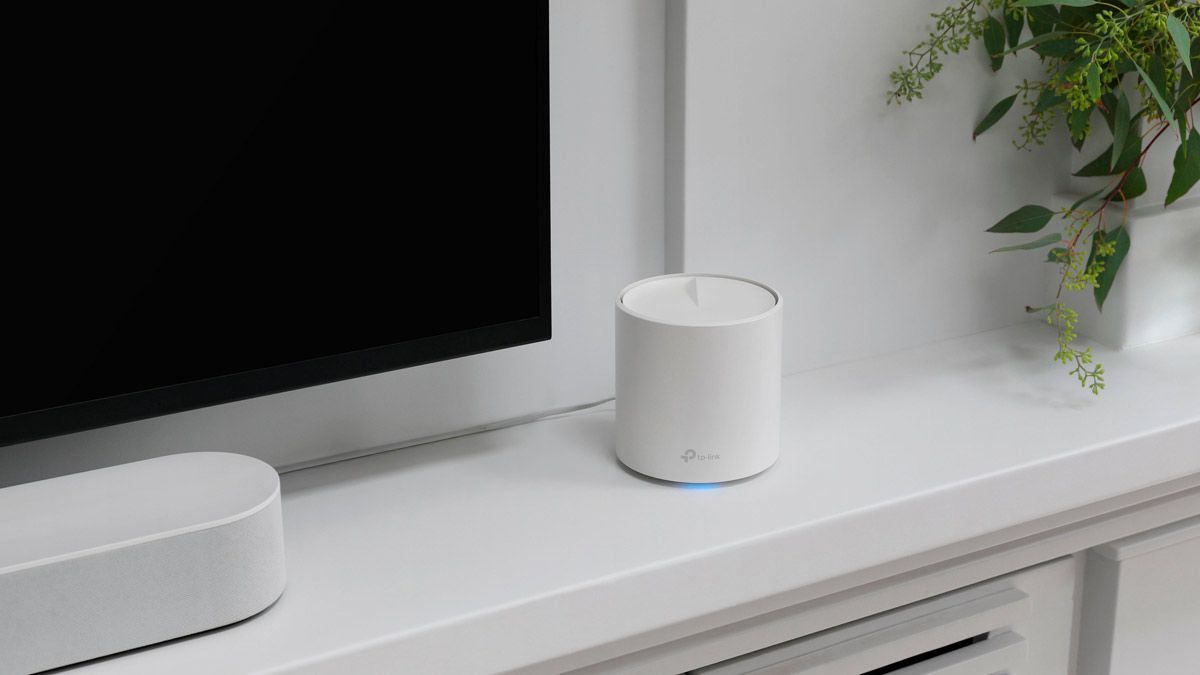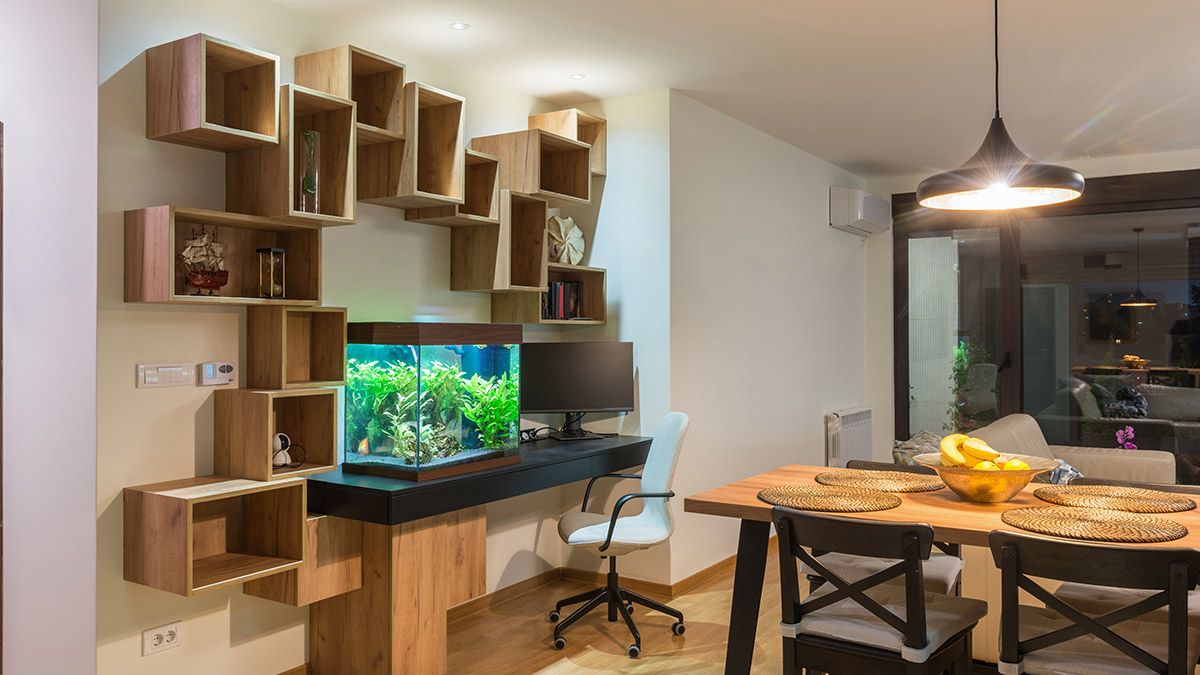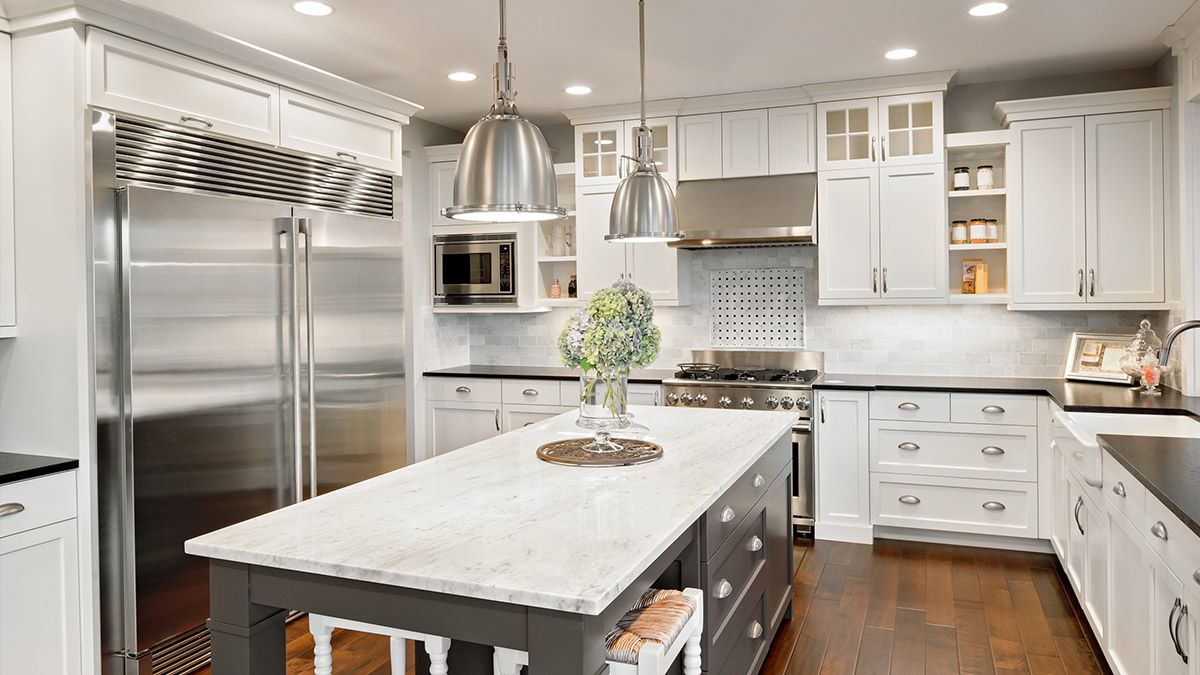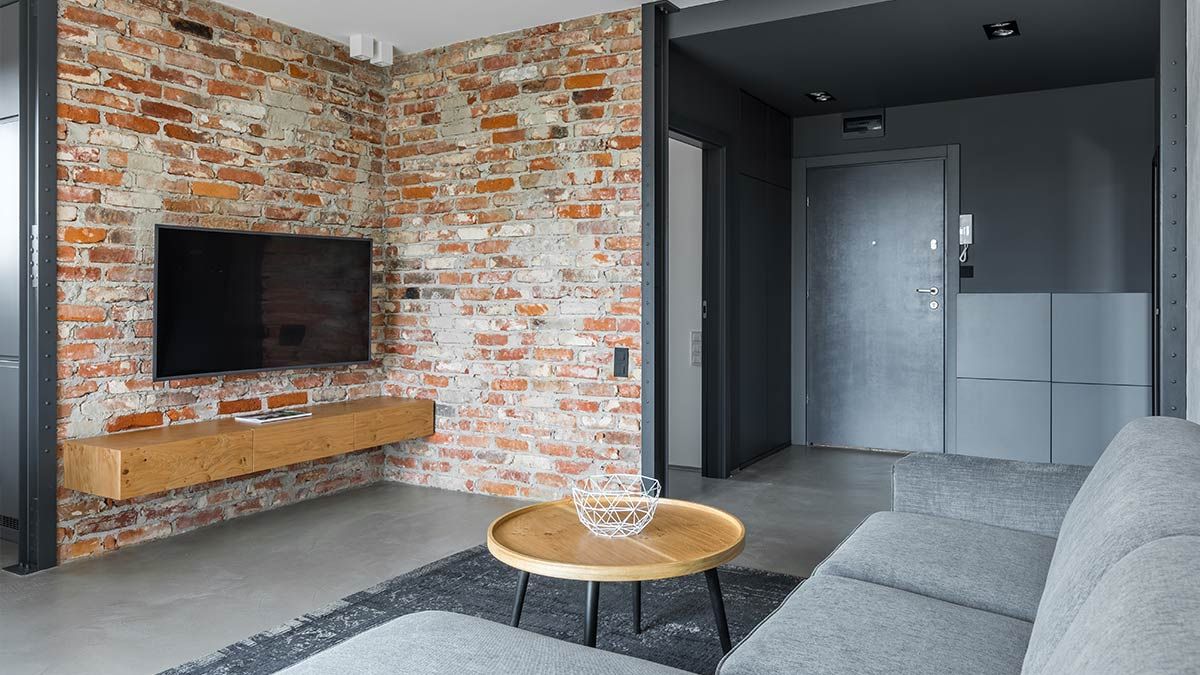Quick Links
There are a surprising number of things in your home---from the type of material your walls are made of to the kind of things you decorate your home with---that can degrade your Wi-Fi signal.
A Word on Router Placement
Before we dig into all the different things that can affect your Wi-Fi signal in your home, let's start off by talking about Wi-Fi in general, router placement, and how to make the best use of the information we're about to share.
You'll never have a home that's absolutely perfect for a Wi-Fi signal because having a home with stuff in it (including yourself and your family!) impacts Wi-Fi. But you can use an improved understanding of how Wi-Fi works to best place your Wi-Fi router and/or mesh nodes in your home.
It's useful to think of your Wi-Fi router as a light bulb that radiates Wi-Fi out into the environment just like a lightbulb radiates visible light. Why do we put lights on the ceilings of rooms in our homes? Because that's the most practical place to put a light bulb if we want the most light to reach the most area of the room without being obstructed by something.
And when we use lighting elsewhere, like a table lamp, we don't put the table lamp behind a large appliance, we put it where the light can fall where we need it---like beside a reading chair or on our desk.
So as you read through all the different objects and materials here that can impact your Wi-Fi signal, think about ways you can move your Wi-Fi router or adjust the location of your Wi-Fi mesh nodes to avoid the materials that block or absorb the signal.
Decor Can Degrade Wi-Fi
One of the more surprising things that can degrade your Wi-Fi signal is the decor. We tend to think about stuff like concrete walls or other large and weighty things when we contemplate Wi-Fi problems, but there are some interesting examples of decor impacting the signal.
Fish Tanks
Water, for example, is excellent at blocking Wi-Fi signals. Putting your Wi-Fi router right next to a large fish tank is like putting a dampener on it.
You'll get a fine signal on the side of the tank where the router is located, but you'll notice a degraded signal on the other side.
Bookshelves
Books are quite dense and, if you put enough of them together, like lining an entire wall with bookshelves, you've effectively built yourself a nice big signal dampener. Traversing the length of a long bookcase is even harder for Wi-Fi signals.
It's best not to put a router or mesh node on a bookshelf at all, but this is especially true if the place you need a strong signal is at the opposite end of a long run of shelves.
Mirrors
Mirrors can also interfere with Wi-Fi signals. The coating that changes a sheet of glass into a mirror is metallic.
Large wall mirrors have a bigger impact than smaller mirrors and older mirrors affect Wi-Fi more than newer ones (on account of the older mirrors containing actual silver and not the less expensive backings found in newer mirrors).
TV Sets
Televisions look like black mirrors when they're off but it's not the glass that causes the issue, it's the giant metal shield inside. If you were to take your flat-screen TV apart (or computer monitors for that matter) you'd find that a metal plate covers almost the entire back.
That metal plate serves both as an electromagnetic shield and to beef up the TV's structural integrity. It also interferes with Wi-Fi signals passing through that space so don't stash your router right behind your TV.
Metal Decorations
Speaking of metal, metal decor can also impede your Wi-Fi. Metal wall art (even if it's on the opposite side of the wall from where you hung your router) can impact your signal.
In one memorable case, a neighbor of mine was complaining their Wi-Fi signal was OK upstairs but absolute rubbish downstairs. Upon investigation, I found they had put their router in a large decorative metal basket.
The Wi-Fi signal could pass up into the upstairs relatively unimpeded but the router was surrounded by an accidental Faraday cage on the sides.
Appliances Are Like Lead Aprons
Not everybody has huge antique mirrors in their homes or giant fish tanks. But we all have appliances, and appliances are practically lead aprons when it comes to impeding Wi-Fi signals.
Kitchen Appliances
In the kitchen, the refrigerator, dishwasher, stove, and even microwave oven are large metal objects that effectively block Wi-Fi.
When thinking about the layout of your home and the relationship of the router to the devices that need Wi-Fi, don't overlook how much radio-wave absorbing mass is in the kitchen.
Laundry Appliance and Home Utilities
In the laundry room, your washer and dryer are equally chunky metal objects that are no friend to Wi-Fi. And although they aren't usually thought of as an "appliance," exactly, your furnace and water heater impact Wi-Fi signal strength too. (The water heater doubly so, as it's not just a giant metal cylinder---but it's filled with water, too!)
For folks with the laundry, furnace, and water heater tucked away in the corner of the basement, that's likely not much of a consideration. But, if you have a first-floor laundry and utility room, then you'll want to consider your router's location in relation to it.
Construction Materials Sponge Up Signals
Everything else we've talked about so far is relatively easy to deal with. If you had your Wi-Fi router sitting on a shelf right next to a giant aquarium or you realized your home office is separated from your router by your kitchen and the laundry room you're lucky. Moving a router is trivial compared to dealing with the actual construction of your home conspiring against a good Wi-Fi signal.
Drywall Isn't So Bad
From a Wi-Fi signal transmission standpoint, wood-stud and drywall-covered interior walls are the best. Drywall is practically invisible to Wi-Fi and while wood does absorb some of your Wi-Fi signal studs are fairly small and widely spaced.
Folks with stick-and-drywall type homes will have the best Wi-Fi signal transmission range among all other kinds of home construction.
Steel Studs and Old Lathe Walls Can Be Problematic
If your home has steel-stud construction, the steel studs interfere with the signal. Similar problems arise if you have an older home with lathe and plaster walls instead of drywall. The metal wire used to reinforce the lathe can function as a primitive faraday cage.
The more metal there is in the walls of your home, be it steel studs, wire lathe, or even the foil-lined insulation that was popular in the mid-20th century, the more transmission problems you'll have.
Concrete Walls Are Terrible for Wi-Fi
Thick concrete walls and concrete floors aren't particularly common in most residential construction, but there is a notable trend toward homes constructed with insulated concrete forms instead of stick-built construction. Having solid concrete exterior and even interior walls is great for energy bills and surviving tornados but it's terrible for Wi-Fi transmission.
Cinderblock walls aren't much better, although they don't dampen the signal as strongly as solid concrete.
And although concrete and steel construction is still fairly uncommon in stand-alone residences---at least in the United States---it's quite common in newer condos, townhomes, and apartments. If you live in a relatively new multi-person residence, there's a good chance it's built with steel and concrete and not wood.
Floors Can Foil You Too
In multi-story homes and/or homes with basements, don't forget to think about the floor itself. If you have poured concrete floors you have the same problem you'd have with concrete walls.
Foil insulation layers in flooring can cause problems, too. So can the wire grid pattern found in under-floor electric radiant heat, as can the mass of water in found in radiator-based systems. Often times such systems are embedded into concrete floors or just above them which just compounds the problem.
Unlike some of the situations we mentioned earlier on, like you unwittingly put your Wi-Fi router too close to your fish tank or it shared a wall with your hot water heater, it's a bit tougher to wrestle with the physical structure of your home. You can't just replace concrete walls with wood ones or change brick to drywall.
In those cases, your best bet, besides paying close attention to your home's layout and aiming for optimum placement, is to upgrade your router--especially to a mesh system where you can place multiple nodes throughout the home to increase the overall coverage.




